Maryland Fishing Report: June 13
Many of us who have spent a lifetime fishing remember the first fish we ever caught. For some, that memory might include a tough and pugnacious little rascal called the bluegill sunfish. It has a habit of attacking most any bait with total abandon and have the fighting strength of a bull – making it a perfect target for our youngest fishermen. A simple bobber-and-worm rig cast into a local pond is just the right recipe for impatient youth.
Maryland state fish hatcheries do a little genetic engineering to create a hybrid bluegill by crossing it with a green sunfish, sort of the Jack Russel terrier of the sunfish world –making an even feistier adversary for the bobber-and-worm crowd. Our department has a program that stocks these hybrid bluegill sunfish in ponds for youth fishing events.
If you want to enjoy a fun day with young aspiring anglers, check out our fishing rodeo schedule.
Don’t forget there is one more free fishing day coming up on July 4. If you can think of someone you might like to introduce to fishing, this is a great opportunity for someone to try the sport without buying a license.
Weekly Fishing Conditions Forecast Summary: June 13-19
Expect muddy waters and possible algal blooms to continue to reduce water clarity in most areas of Maryland’s waters. Anglers will experience warm, sunny fishing conditions for most of this upcoming week.
Main Chesapeake Bay water temperatures are holding at about 72 degrees as a result of cloudy, rainy and cool conditions. However, expect the upcoming sunny, warm weather to increase water temperatures back towards the middle to upper 70s. Areas from Swan Point south to Plum Point are showing poor bottom oxygen conditions below about 20 feet while other portions of the main bay and tidal rivers have much better oxygen conditions. Be sure to check the full forecast and the Don’t Fish Below this Depth for conditions in your area. There will be above average tidal currents Sunday through next Monday as a result of the new moon on Thursday, June 14.
For the full weekly fishing conditions summary and more detailed and up-to-date fishing conditions in your area of the bay, be sure to check out Eyes on the Bay’s Click Before You Cast.
Upper Chesapeake Bay
Stained water conditions from runoff continues to be present in the upper bay region, especially on the western side of the bay. Chumming and chunking have been the most popular ways to fish for striped bass in these conditions. Many of the shoals, reefs and knolls between Rock Hall and Baltimore Harbor have been good places to chum, along with Swan, Podickory and Love points. Once you locate suspended fish on a depth finder, it’s time to set up a chum slick or start chunking. The best fish are being caught on the bottom in the back of a chum slick during a good tide. Live-lining eels and white perch in the lower Susquehanna River area, Pooles Island, Key Bridge area and Bay Bridge piers have been great for catching some of the larger striped bass.
Water clarity tends to better on the eastern side of the bay and for that reason anyone considering trolling has been working the channel edges at the Triple Buoys, Love Point and down to the Bay Bridge. Dark colors and chartreuse have been popular colors for bucktails, swimshads and crankbaits as well as gold colored spoons. The upper bay is holding a lot of 2- and 3-year-old striped bass that tend to be very common and trolling tends to produce a larger grade of striped bass.
Jigging over suspended fish that are holding near channel edges or structure has been a good option, especially on the eastern side of the bay where water clarity is better. Casting swimshads and topwater lures near Eastern Neck Island, the Baltimore Harbor area, the mouth of the Magothy River and the Bay Bridge piers has been producing some fun action.
Middle Bay
Opportunities are widespread throughout the middle bay region for striped bass this week — at times it may be difficult to come up with legal-sized fish but there certainly is plenty of action. There are a lot of 3-year-old striped bass that are coming up short of 19 inches but they’ll get there in the next couple of months. Those that are chumming are perhaps seeing the greatest throwback ratio as all sizes of striped bass are attracted to chum slicks. Allowing a bait to sink to the bottom and rest at the back of the chum slick is often the best tactic to catch the largest fish. Chunking is also effective and some anglers are beginning to live line the few spot they’re able to locate in the shallower shoal areas on bloodworms. The 30-foot outside edge at Hacketts, Tolleys. Thomas Point, the Hill and Buoy 83 are good places to look for striped bass.
Jigging has been a good option when striped bass can be found suspended along main channel edges in the bay and tidal river mouths. The steep edges of Tilghman Point in Eastern Bay and Bloody Point have also been providing action. Many are using darker colored 6-inch to 8-inch soft plastics to deal with stained water and to try and cut down on the number of small striped bass taking jigs. Casting topwater lures and swimshads in the shallower waters of the tidal rivers and the rocks at Poplar Island has been fun; throwbacks are part of the equation but some of the fish being caught measuring 20 inches or better.
Lower Bay
Fishermen are not the only ones looking to catch a few fish for dinner this week — large pods of bottlenosed dolphin are stirring things up in the lower bay region. Croakers, spot and smaller striped bass tend to scatter when the dolphins are in the area. Chumming has been a great to fish at some of the steeper channel edges near St. Georges Island and Piney Point in the lower Potomac, and the rock piles north of Point Lookout, to name a few.
Anywhere fish can spotted on a depth finder is worth trying some chumming or chunking. The smaller striped bass that are so prevalent in the region can swarm a chum slick at times, but often the larger fish can be lurking deeper and farther back in the slick. Spot are becoming more common in the region and those who have been taking the time to fish the shoal areas in the lower Patuxent River and around Point Lookout have been finding a few on bloodworm baits along with white perch and croakers. Live-lining spot along the channel edges is a great way to catch a larger grade of striped bass.
Jigging can offer a lot of fun and using larger soft plastics in the 8-inch size range can help cut down on the number of smaller striped bass. The lower Patuxent channel edges, Cove Point, the Buoy 72 area over to the Target Ship, and the lower Potomac River are all good areas to explore with depth finders. Breaking fish are becoming more common and although much of the surface action can be smaller fish, jigging underneath close to the bottom can often produce larger fish.
Casting topwater lures and swimshads in the shallower areas of the lower Patuxent, Potomac and St. Mary’s rivers has been offering a lot of fun fishing recently. There are a lot of smaller fish but the action is fun and there are larger striped bass about. The Tangier Sound and Pocomoke Sound areas up to Hoopers Island offer good light-tackle fishing for striped bass and speckled trout along the marsh edges, guts and creeks. Most of the striped bass are coming up a little short on length but if you match the tackle to the fish they are a lot of fun. This is a great time to break out a 5 wt. or 7 wt. fly rod and some skipping bugs. The grass beds are getting thick in many areas so topwater lures tend to a good way to fish over them.
White perch fishing has been good in all three regions of the bay and they can be caught in deeper waters on bottom rigs baited with bloodworms or grass shrimp. Casting small spinnerbaits, spinners and beetle-spins with ultra-light tackle along shoreline structure is fun way to fish on a quiet morning or evening. Many are reporting some really nice perch in the 11-inch to 13-inch size range. In the lower bay region, croaker and spot can be mixed in with the white perch when fishing shoals and oyster bars with bottom rigs and bloodworms.
Recreational crabbing is starting to show some life for those who put in their time. Crabbing in the upper bay has generally been poor but picks up in the middle bay region where catches of a half-bushel can be found. The lower Dorchester County and Somerset County tidal rivers and creeks have been offering the best crabbing.
At Deep Creek Lake the largemouth bass are transitioning to a post-spawn mode of behavior and shifting towards their typical summer patterns of feeding. They can now be found feeding in the shallower areas around grass in the mornings and evenings and holding under floating docks, thick grass or sunken wood during the day. Buzzbaits and other topwater lures are a good bet in the early or late hours; soft plastics and stick worms dropped through grass or pitched under docks during later hours work well. Walleye tend to be deep during the day and move up into shallower waters along steep rocky edges during the evening hours. Trout are also holding deep often down by the dam face. Bluegills are holding near shorelines in 4 feet to 8 feet of water.
Trout fishing in the western and central regions is shifting to more of a summer fishery and presents a wonderful time for fly fishermen. Sulphurs are emerging in trout management waters in the western region such as the Youghiogheny and upper Gunpowder rivers in the central region. Dry flies or a #16 elk hair caddis are often great choices.

Brian Dvorak enjoys fishing for catfish in the Elk River area at night and on June 3, caught a new state record white catfish that weighed 9.61 lbs. Photo courtesy of Brian Dvorak
Largemouth bass in all the regions of the state — whether they inhabit a small pond, a large reservoir or tidal rivers — are transitioning to a summer mode of behavior. This means getting up early, and right now that means being out on the water at 5:30 a.m. for the morning bite. Perhaps the best largemouth bass fishing is when you can fish topwater lures over or near shallow grass. The evening bite is often just as good, and certainly a lot more forgiving to getting some sleep. As the sun rises in the sky, largemouth bass will move to cool shade in the form of thick grass, shoreline brush, docks, fallen tree tops and deep sunken wood. Stick worms and soft plastics worked through grass is a good bet as well as grubs, jigs and small crankbaits near deeper structure. When fishing in tidal rivers, an early morning or late evening falling tide will often push largemouth bass to the outside edges of grass, lily pads or spatterdock. Casting spinnerbaits is a great way to cover a lot of these edges.
Warm summer days tend to beckon for a shady spot along a favorite river or lake, and fishing for catfish is a wonderful way to relax while watching a fishing rod resting in a forked stick. Most all of the tidal rivers flowing into the Chesapeake have excellent populations of channel catfish and many now have blue catfish or flathead catfish. A good flowing current, fresh cut bait, a good chair and company is all one needs to enjoy some peaceful fishing for catfish.
Atlantic Ocean and Coastal Bays
Those who are surf fishing this week are cashing in on a wonderful kingfish bite along the Maryland beaches. Bloodworms and small strip baits on a bottom rig have been the ticket to some excellent eating fish, while blowfish and flounder are also part of the mix. Those casting out larger baits have been picking away at bluefish and a few large striped bass.
The first sheepshead was reported to be caught at the South Jetty last weekend at a little over 10 pounds, raising expectations that we will enjoy another great year of sheepshead fishing at the inlet. Sand fleas tend to be the preferred bait for sheepshead.
Bluefish have been sporadically moving in and out of the inlet during the evening hours. A few nice striped bass are being caught on live eels and flounder are also present. The channels such as the Thorofare have been good places to fish for flounder, Sinepuxent Bay has also been good out in front of the airport.
Outside the inlet, sea bass are being caught on the wreck and reef sites and captains report that the best fishing has been to the south and farther offshore. Bluefin tuna are being caught along the 30 Fathom curve as well as the Baltimore Canyon this week. Yellowfin tuna are being caught around Poormans Canyon and the Wilmington Canyon with a mix of bigeye tuna, longfin albacore and dolphin. Thresher and mako sharks are being caught at various 30 Fathom line locations.
“There is great pleasure in being on the sea, in the unknown wild suddenness of a great fish; in his life and death which he lives for you in an hour while your strength is harnessed to his; and there is satisfaction in conquering this thing, which rules the sea it lives in.” – Ernest Hemingway,“On The Blue Water,” 1935
 ABOUT THE AUTHOR Keith Lockwood has been writing the Fishing Report since 2003 and has had a long career as a fisheries research biologist since 1973. Over the course of his career he has studied estuarine fishery populations, ocean species, and over a decade long study of bioaccumulation of chemicals in aquatic species in New Jersey. Upon moving to Oxford on the eastern shore of Maryland; research endeavors focused on a variety of catch-and-release studies as well as other fisheries related research at the Cooperative Oxford Laboratory. Education and outreach to the fishing public has always been an important component to the mission of these studies. Keith is an avid outdoorsman enjoying hunting, fishing, bird dogs, family and life on the eastern shore of Maryland.
ABOUT THE AUTHOR Keith Lockwood has been writing the Fishing Report since 2003 and has had a long career as a fisheries research biologist since 1973. Over the course of his career he has studied estuarine fishery populations, ocean species, and over a decade long study of bioaccumulation of chemicals in aquatic species in New Jersey. Upon moving to Oxford on the eastern shore of Maryland; research endeavors focused on a variety of catch-and-release studies as well as other fisheries related research at the Cooperative Oxford Laboratory. Education and outreach to the fishing public has always been an important component to the mission of these studies. Keith is an avid outdoorsman enjoying hunting, fishing, bird dogs, family and life on the eastern shore of Maryland.

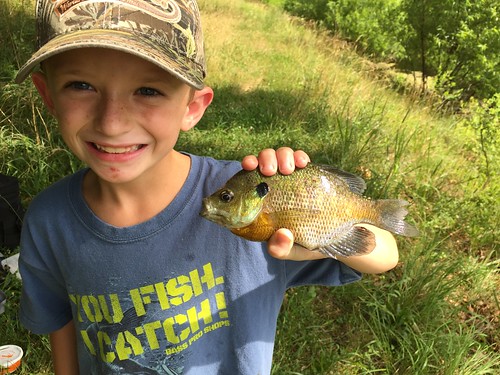
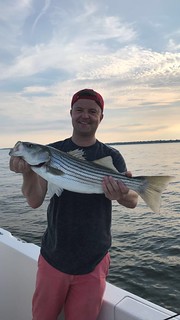
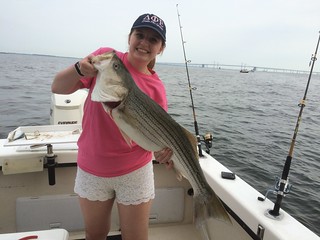
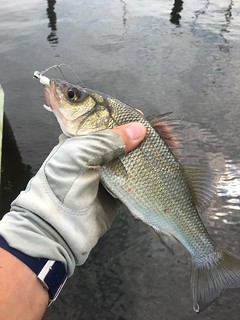
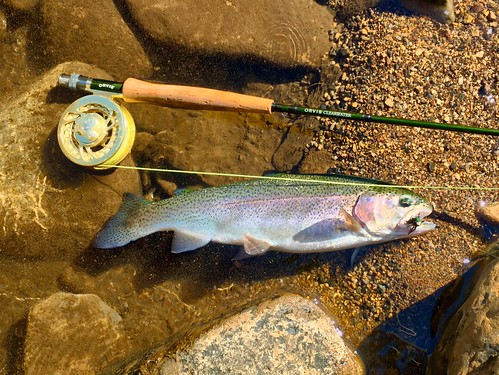
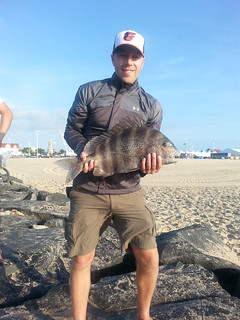
 1-888-373-7888
1-888-373-7888 233733
233733